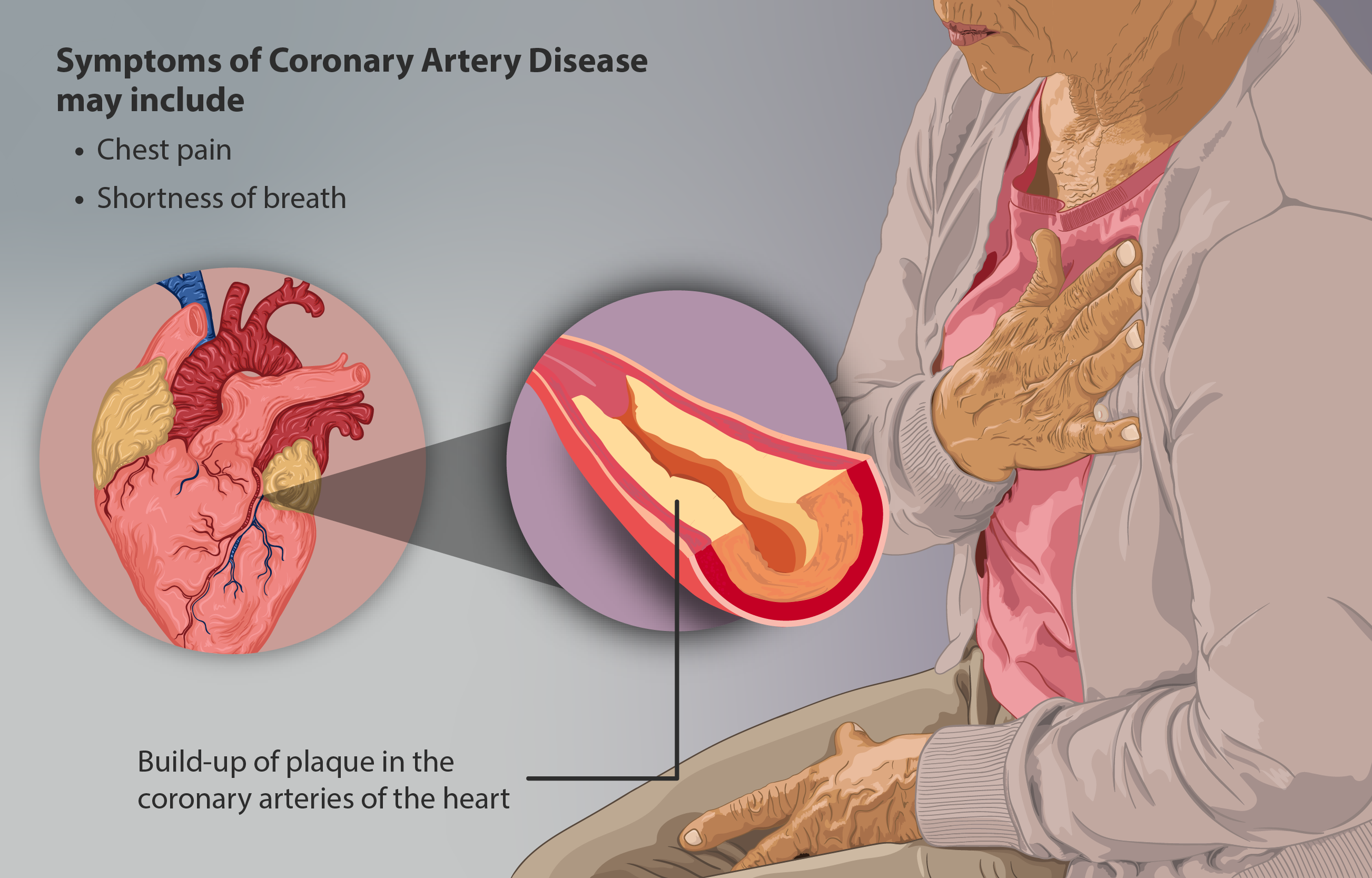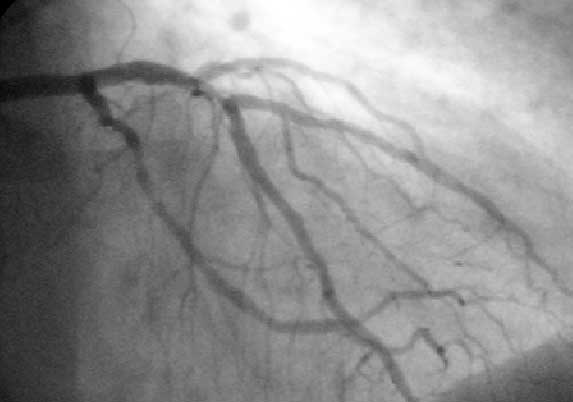|
Phosphorylcholine
Phosphorylcholine (abbreviated ChoP) is the hydrophilic polar head group of some phospholipids, which is composed of a negatively charged phosphate bonded to a small, positively charged choline group. Phosphorylcholine is part of the platelet-activating factor; the phospholipid phosphatidylcholine and sphingomyelin, the only phospholipid of the membrane that is not built with a glycerol backbone. Treatment of cell membranes, like those of RBCs, by certain enzymes, like some phospholipase A2, renders the phosphorylcholine moiety exposed to the external aqueous phase, and thus accessible for recognition by the immune system. Antibodies against phosphorylcholine are naturally occurring autoantibodies that are created by CD5+/ B-1 B cells and are referred to as non-pathogenic autoantibodies. Thrombus-resistant stents In interventional cardiology, phosphorylcholine is used as a synthetic polymer-based coating, applied to drug-eluting stents, to prevent the occurrence of cor ... [...More Info...] [...Related Items...] OR: [Wikipedia] [Google] [Baidu] |
Platelet-activating Factor
Platelet-activating factor, also known as PAF, PAF-acether or AGEPC (acetyl-glyceryl-ether-phosphorylcholine), is a potent phospholipid activator and mediator of many leukocyte functions, platelet aggregation and degranulation, inflammation, and anaphylaxis. It is also involved in changes to vascular permeability, the oxidative burst, chemotaxis of leukocytes, as well as augmentation of arachidonic acid metabolism in phagocytes. PAF is produced by a variety of cells, but especially those involved in host defense, such as platelets, endothelial cells, neutrophils, monocytes, and macrophages. PAF is continuously produced by these cells but in low quantities and production is controlled by the activity of PAF acetylhydrolases. It is produced in larger quantities by inflammatory cells in response to specific stimuli. History PAF was discovered by French immunologist Jacques Benveniste in the early 1970s. PAF was the first phospholipid known to have messenger functions. Benvenist ... [...More Info...] [...Related Items...] OR: [Wikipedia] [Google] [Baidu] |
Zotarolimus
Zotarolimus (INN, codenamed ABT-578) is an immunosuppressant. It is a semi-synthetic derivative of sirolimus (rapamycin). It was designed for use in stents with phosphorylcholine as a carrier. Zotarolimus, or ABT-578, was originally used on Abbott's coronary stent platforms to reduce early inflammation and restenosis; however, Zotarolimus failed Abbott's primary endpoint to bring their stent/drug delivery system to market. The drug was sold/distributed to Medtronic for use on their stent platforms, which is the same drug they use today. Coronary stents reduce early complications and improve late clinical outcomes in patients needing interventional cardiology. The first human coronary stent implantation was first performed in 1986 by Puel et al. However, there are complications associated with stent use, development of thrombosis which impedes the efficiency of coronary stents, haemorrhagic and restenosis complications are problems associated with stents. These complications hav ... [...More Info...] [...Related Items...] OR: [Wikipedia] [Google] [Baidu] |
Phospholipids
Phospholipids are a class of lipids whose molecule has a hydrophilic "head" containing a phosphate group and two hydrophobic "tails" derived from fatty acids, joined by an alcohol residue (usually a glycerol molecule). Marine phospholipids typically have omega-3 fatty acids EPA and DHA integrated as part of the phospholipid molecule. The phosphate group can be modified with simple organic molecules such as choline, ethanolamine or serine. Phospholipids are a key component of all cell membranes. They can form lipid bilayers because of their amphiphilic characteristic. In eukaryotes, cell membranes also contain another class of lipid, sterol, interspersed among the phospholipids. The combination provides fluidity in two dimensions combined with mechanical strength against rupture. Purified phospholipids are produced commercially and have found applications in nanotechnology and materials science. The first phospholipid identified in 1847 as such in biological tissues was ... [...More Info...] [...Related Items...] OR: [Wikipedia] [Google] [Baidu] |
Choline
Choline is a cation with the chemical formula . Choline forms various Salt (chemistry), salts, such as choline chloride and choline bitartrate. An essential nutrient for animals, it is a structural component of phospholipids and cell membranes. Choline is used to synthesize acetylcholine, a neurotransmitter involved in muscle control and numerous functions of the nervous system. Choline is involved in early development of the brain, gene expression, cell membrane Signaling peptide receptor, signaling, and brain metabolism. Although humans synthesize choline in the liver, the amount produced naturally is insufficient to meet cellular functions, requiring that some choline be obtained from foods or dietary supplements. Foods rich in choline include meats, poultry, eggs, and other animal-based products, cruciferous vegetables, beans, nuts, and whole grains. Choline is present in breast milk and is commonly added as an food additive, ingredient to baby foods. Chemistry Choline i ... [...More Info...] [...Related Items...] OR: [Wikipedia] [Google] [Baidu] |
Phospholipid
Phospholipids are a class of lipids whose molecule has a hydrophilic "head" containing a phosphate group and two hydrophobic "tails" derived from fatty acids, joined by an alcohol residue (usually a glycerol molecule). Marine phospholipids typically have omega-3 fatty acids EPA and DHA integrated as part of the phospholipid molecule. The phosphate group can be modified with simple organic molecules such as choline, ethanolamine or serine. Phospholipids are a key component of all cell membranes. They can form lipid bilayers because of their amphiphilic characteristic. In eukaryotes, cell membranes also contain another class of lipid, sterol, interspersed among the phospholipids. The combination provides fluidity in two dimensions combined with mechanical strength against rupture. Purified phospholipids are produced commercially and have found applications in nanotechnology and materials science. The first phospholipid identified in 1847 as such in biological tissues w ... [...More Info...] [...Related Items...] OR: [Wikipedia] [Google] [Baidu] |
Citicoline
Citicoline (INN), also known as cytidine diphosphate-choline (CDP-choline) or cytidine 5'-diphosphocholine is an intermediate in the generation of phosphatidylcholine from choline, a common biochemical process in cell membranes. Citicoline is naturally occurring in the cells of human and animal tissue, in particular the organs. Use as a dietary supplement Citicoline is available as a supplement in over 70 countries under a variety of brand names: CereBleu, Cebroton, Ceraxon, Cidilin, Citifar, Cognizin, Difosfocin, Hipercol, NeurAxon, Nicholin, Sinkron, Somazina, Synapsine, Startonyl, Trausan, Xerenoos, etc. When taken as a supplement, citicoline is hydrolyzed into choline and cytidine in the intestine. Once these cross the blood–brain barrier it is reformed into citicoline by the rate-limiting enzyme in phosphatidylcholine synthesis, CTP-phosphocholine cytidylyltransferase. Research Memory and cognition Studies suggest, but have not confirmed, potential benefits of citicoline ... [...More Info...] [...Related Items...] OR: [Wikipedia] [Google] [Baidu] |
Sphingomyelin
Sphingomyelin (SPH, ) is a type of sphingolipid found in animal cell membranes, especially in the membranous myelin sheath that surrounds some nerve cell axons. It usually consists of phosphocholine and ceramide, or a phosphoethanolamine head group; therefore, sphingomyelins can also be classified as sphingophospholipids. In humans, SPH represents ~85% of all sphingolipids, and typically makes up 10–20 mol % of plasma membrane lipids. Sphingomyelin was first isolated by German chemist Johann L.W. Thudicum in the 1880s. The structure of sphingomyelin was first reported in 1927 as N-acyl-sphingosine-1-phosphorylcholine. Sphingomyelin content in mammals ranges from 2 to 15% in most tissues, with higher concentrations found in nerve tissues, red blood cells, and the ocular lenses. Sphingomyelin has significant structural and functional roles in the cell. It is a plasma membrane component and participates in many signaling pathways. The metabolism of sphingomyelin c ... [...More Info...] [...Related Items...] OR: [Wikipedia] [Google] [Baidu] |
Phosphocholine
Phosphocholine is an intermediate in the synthesis of phosphatidylcholine in tissues. Phosphocholine is made in a reaction, catalyzed by choline kinase, that converts ATP and choline into phosphocholine and ADP. Phosphocholine is a molecule found, for example, in lecithin. In nematodes and human placentas, phosphocholine is selectively attached to other proteins as a posttranslational modification to suppress an immune response by their hosts. It is also one of the binding targets of C-reactive protein (CRP). Thus, when a cell is damaged, CRP binds to phosphocholine, beginning the recognition and phagocytotic immunologic response. Phosphocholine is a natural constituent of hens' eggs (and many other eggs) often used in biomimetic membrane studies. See also * Alkylphosphocholines * Choline * Phosphoethanolamine Phosphorylethanolamine or phosphoethanolamine is an ethanolamine derivative that is used to construct two different categories of phospholipids. One categor ... [...More Info...] [...Related Items...] OR: [Wikipedia] [Google] [Baidu] |
Atherosclerosis
Atherosclerosis is a pattern of the disease arteriosclerosis, characterized by development of abnormalities called lesions in walls of arteries. This is a chronic inflammatory disease involving many different cell types and is driven by elevated blood levels of cholesterol. These lesions may lead to narrowing of the arterial walls due to buildup of atheromatous plaques. At the onset, there are usually no symptoms, but if they develop, symptoms generally begin around middle age. In severe cases, it can result in coronary artery disease, stroke, peripheral artery disease, or kidney disorders, depending on which body part(s) the affected arteries are located in the body. The exact cause of atherosclerosis is unknown and is proposed to be multifactorial. Risk factors include dyslipidemia, abnormal cholesterol levels, elevated levels of inflammatory biomarkers, high blood pressure, diabetes, smoking (both active and passive smoking), obesity, genetic factors, family history, lifes ... [...More Info...] [...Related Items...] OR: [Wikipedia] [Google] [Baidu] |
Thrombogenic
Thrombogenicity refers to the tendency of a material in contact with the blood to produce a thrombus, or clot. It not only refers to fixed thrombi but also to emboli, thrombi which have become detached and travel through the bloodstream. Thrombogenicity can also encompass events such as the activation of immune pathways and the complement system. All materials are considered to be thrombogenic with the exception of the normal state of endothelial cells which line blood vessels. Certain medical implants appear non-thrombogenic due to high flow rates of blood past the implant, but in reality all are thrombogenic to a degree. Various surface treatments are available to minimize these thrombogenic effects. A thrombogenic implant will eventually be covered by a fibrous capsule, the thickness of this capsule can be considered one measure of thrombogenicity, and if extreme can lead to the failure of the implant. See also * Endothelial activation Endothelial activation is a proinfla ... [...More Info...] [...Related Items...] OR: [Wikipedia] [Google] [Baidu] |
Coronary Artery Disease
Coronary artery disease (CAD), also called coronary heart disease (CHD), or ischemic heart disease (IHD), is a type of cardiovascular disease, heart disease involving Ischemia, the reduction of blood flow to the cardiac muscle due to a build-up of atheromatous plaque in the Coronary arteries, arteries of the heart. It is the most common of the cardiovascular diseases. CAD can cause stable angina, unstable angina, myocardial ischemia, and myocardial infarction. A common symptom is angina, which is chest pain or discomfort that may travel into the shoulder, arm, back, neck, or jaw. Occasionally it may feel like heartburn. In stable angina, symptoms occur with exercise or emotional Psychological stress, stress, last less than a few minutes, and improve with rest. Shortness of breath may also occur and sometimes no symptoms are present. In many cases, the first sign is a Myocardial infarction, heart attack. Other complications include heart failure or an Heart arrhythmia, abnormal h ... [...More Info...] [...Related Items...] OR: [Wikipedia] [Google] [Baidu] |
Balloon Angioplasty
Angioplasty, also known as balloon angioplasty and percutaneous transluminal angioplasty, is a minimally invasive endovascular procedure used to widen narrowed or obstructed arteries or veins, typically to treat arterial atherosclerosis. A deflated balloon attached to a catheter (a balloon catheter) is passed over a guide-wire into the narrowed vessel and then inflated to a fixed size. The balloon forces expansion of the blood vessel and the surrounding muscular wall, allowing an improved blood flow. A stent may be inserted at the time of ballooning to ensure the vessel remains open, and the balloon is then deflated and withdrawn. Angioplasty has come to include all manner of vascular interventions that are typically performed percutaneously. Uses and indications Coronary angioplasty A coronary angioplasty is a therapeutic procedure to treat the stenotic (narrowed) coronary arteries of the heart found in coronary heart disease. These stenotic segments of the corona ... [...More Info...] [...Related Items...] OR: [Wikipedia] [Google] [Baidu] |





